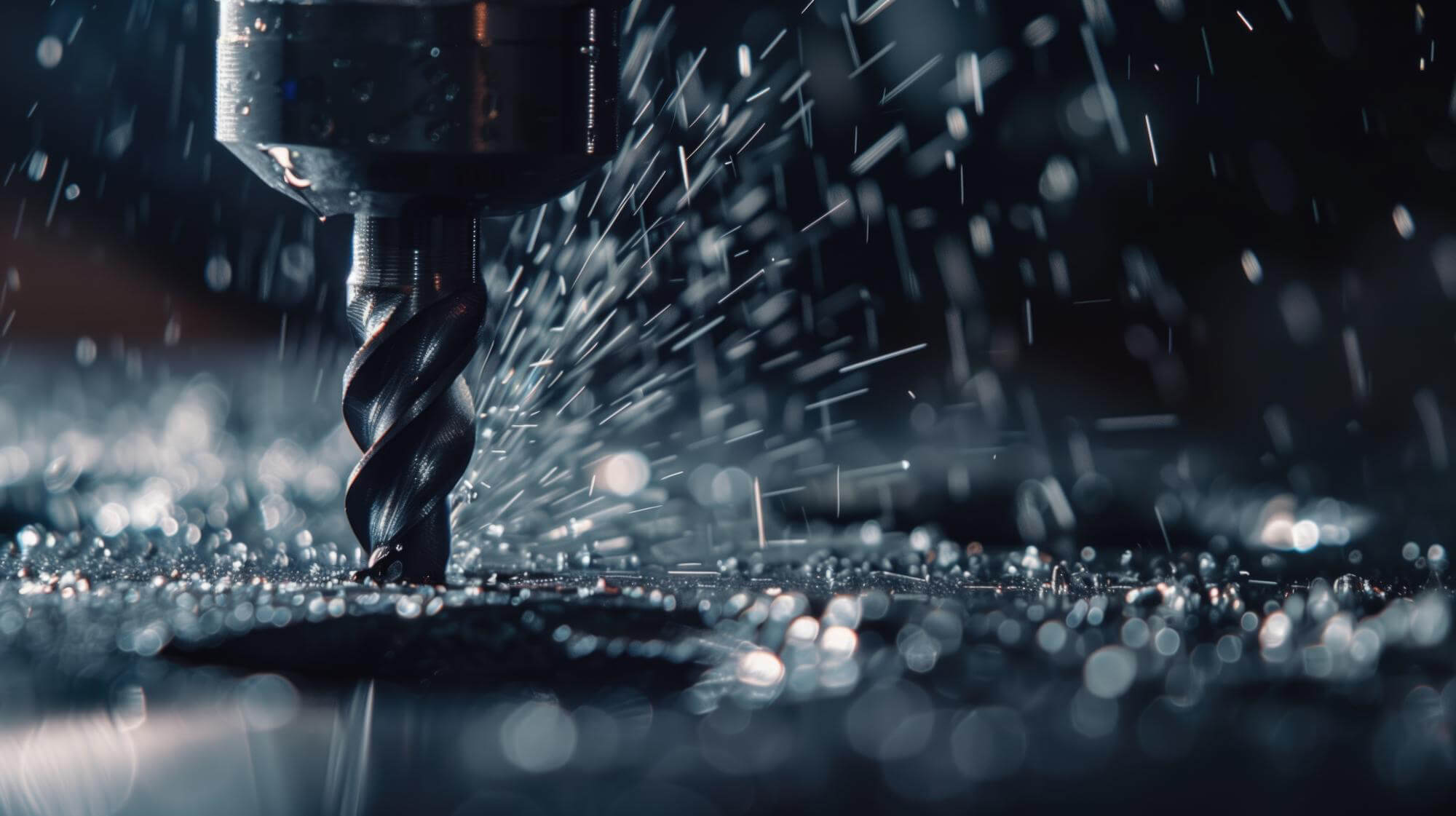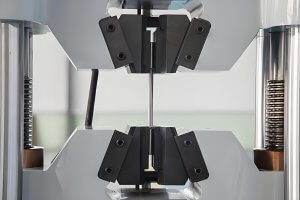In the world of CNC machining, Carbon Fiber Reinforced Polymer (CFRP) stands out as a revolutionary material that has transformed industries ranging from aerospace to automotive. Known for its exceptional strength-to-weight ratio, corrosion resistance, and durability, CFRP is increasingly being used in the production of high-performance parts, including flanges, motor shafts, and custom nozzles. However, machining CFRP presents unique challenges, especially when it comes to cutting processes. This article explores the secrets of CFRP cutting in CNC machining, offering valuable insights for those looking to procure custom CFRP CNC machined parts.
Understanding CFRP: The Basics
Before diving into the cutting secrets, it’s essential to understand what CFRP is and why it’s so widely used. CFRP is a composite material made from carbon fibers embedded in a polymer matrix. The carbon fibers provide the strength, while the polymer matrix binds the fibers together and transfers the loads between them. The result is a material that combines the best properties of both carbon fibers and polymers, making it ideal for applications that require lightweight yet strong components.
Why CFRP?
CFRP has gained popularity due to its unique properties:
- High Strength-to-Weight Ratio: CFRP is much lighter than metals like steel and aluminum while offering comparable or even superior strength. This makes it ideal for applications where weight savings are critical, such as in aerospace and automotive industries.
- Corrosion Resistance: Unlike metals, CFRP does not corrode, making it suitable for harsh environments.
- Fatigue Resistance: CFRP components can withstand repeated loads without significant degradation, which is crucial for structural applications.
These properties make CFRP an attractive choice for high-performance applications, but they also introduce challenges in machining, particularly in cutting processes.
The Challenges of Machining CFRP
CFRP’s unique structure makes it difficult to machine using traditional methods. Here are some of the main challenges:
- Tool Wear: The carbon fibers in CFRP are abrasive, leading to rapid tool wear. This not only increases costs due to frequent tool changes but also affects the quality of the machined parts.
- Delamination: During machining, the layers of CFRP can separate, leading to a loss of structural integrity. This is particularly problematic when producing parts that require high precision, such as flanges.
- Heat Generation: Machining CFRP generates significant heat, which can cause the polymer matrix to degrade, leading to poor surface quality and reduced part strength.
- Burr Formation: The cutting process can lead to the formation of burrs, which need to be removed in a secondary process, adding time and cost to the manufacturing process.
Cutting Secrets for CFRP in CNC Machining
Successfully machining CFRP in CNC processes requires understanding these challenges and applying specific strategies to overcome them. Below are some key insights into cutting CFRP effectively:
1. Choosing the Right Tool Material
The choice of tool material is critical when machining CFRP. Common tool materials include:
- Polycrystalline Diamond (PCD): PCD tools are highly wear-resistant, making them ideal for machining abrasive materials like CFRP. They offer longer tool life and better surface finishes but are expensive.
- Carbide: Carbide tools are a more economical option and offer good performance when machining CFRP, especially when combined with coatings that reduce wear.
Table 1: Comparison of Tool Materials for CFRP Machining
| Tool Material | Wear Resistance | Cost | Surface Finish Quality |
|---|---|---|---|
| Polycrystalline Diamond (PCD) | High | High | Excellent |
| Carbide | Moderate | Moderate | Good |
| High-Speed Steel (HSS) | Low | Low | Poor |
2. Optimizing Cutting Parameters
Optimizing cutting parameters such as cutting speed, feed rate, and depth of cut is essential for reducing tool wear and preventing delamination.
- Cutting Speed: Lower cutting speeds are recommended to reduce heat generation and minimize the risk of delamination.
- Feed Rate: A higher feed rate can help to reduce the contact time between the tool and the workpiece, minimizing heat buildup and tool wear.
- Depth of Cut: A shallow depth of cut helps to reduce the forces on the material, lowering the risk of delamination.
Table 2: Recommended Cutting Parameters for CFRP
| Parameter | Recommended Range |
|---|---|
| Cutting Speed | 100-200 m/min |
| Feed Rate | 0.05-0.15 mm/tooth |
| Depth of Cut | 0.5-1.5 mm |
3. Using Coolants and Lubricants
Using coolants and lubricants can help manage the heat generated during the machining process. However, because CFRP is a composite material, the use of traditional water-based coolants can lead to issues like water absorption by the polymer matrix. Instead, consider using specialized coolants designed for composite materials or air cooling systems that prevent overheating without introducing moisture.
4. Toolpath Strategy
The toolpath strategy can also influence the quality of the machined CFRP part. A climb milling strategy, where the tool moves in the direction of the feed, is often preferred for CFRP as it reduces the risk of delamination and provides a better surface finish. Additionally, ensuring that the cutting force is always directed in a way that minimizes the risk of layer separation can help maintain part integrity.
5. Multi-Axis Machining
For complex CFRP parts, such as those with intricate geometries or varying thicknesses (e.g., aircraft components), multi-axis CNC machining offers significant advantages. It allows for more precise control over the cutting process, reducing the risk of defects and improving overall part quality.
Case Study: CNC Machining of CFRP Flanges
Let’s explore a case study to understand the practical application of these strategies in machining CFRP flanges.
The Challenge
A supplier was tasked with producing CFRP flanges for an aerospace application. The flanges needed to be lightweight yet strong enough to withstand significant pressure and stress. The primary challenge was to machine these flanges to tight tolerances without causing delamination or excessive tool wear.
The Solution
The supplier opted for PCD tools due to their superior wear resistance. The cutting parameters were carefully optimized, with a cutting speed of 150 m/min, a feed rate of 0.1 mm/tooth, and a depth of cut of 1 mm. Air cooling was used to manage heat without risking moisture absorption by the polymer matrix.
The Results
The CNC machined flanges met all dimensional and structural requirements, with minimal tool wear and no signs of delamination. The use of optimized cutting parameters and the right tool material were crucial in achieving these results.
Table 3: Summary of Case Study Results
| Metric | Value |
|---|---|
| Cutting Speed | 150 m/min |
| Feed Rate | 0.1 mm/tooth |
| Depth of Cut | 1 mm |
| Tool Wear | Minimal |
| Delamination | None |
| Surface Finish Quality | Excellent |
Practical Advice for Buyers of CNC Machined CFRP Parts
If you’re looking to procure CNC machined CFRP parts, here are some practical tips to ensure you get the best quality components:
- Specify Material and Machining Requirements: Clearly define the material specifications (e.g., type of CFRP) and machining requirements (e.g., tolerances, surface finish) in your order to ensure the supplier uses appropriate machining strategies.
- Inquire About Tooling and Techniques: Ask your supplier about the tooling and techniques they use for CFRP machining. Ensure they are equipped to handle the challenges of CFRP and have experience with this material.
- Request Quality Assurance Documentation: Ensure your supplier provides documentation that verifies the quality of the machined parts, including measurements of surface finish, dimensional accuracy, and any testing for defects like delamination.
- Consider the Application: Understand how the CFRP part will be used and discuss with your supplier how the machining process can be optimized to meet the specific demands of your application.
- Evaluate Long-Term Supplier Relationships: Given the complexity of CFRP machining, building a long-term relationship with a supplier who understands your specific needs can be beneficial in ensuring consistent quality and performance.
CNC machining of CFRP is a complex process that requires a deep understanding of the material’s properties and the challenges associated with cutting it. By selecting the right tools, optimizing cutting parameters, and employing advanced machining strategies, suppliers can produce high-quality CFRP parts that meet the stringent requirements of industries like aerospace and automotive. For buyers, understanding these processes can help in selecting the right supplier and ensuring that the CNC machined parts you receive are of the highest quality.
Other Articles You Might Enjoy
- Beyond Cutting: Exploring the Multifaceted CNC Machining Process
1. Introduction: Unveiling the Layers of CNC Machining In this introductory section, we peel back the layers of the CNC machining process, going beyond the traditional understanding of cutting. It…
- Exploring Bead Blasting In CNC Machining(cnc cutting tools Hale)
Bead blasting is a crucial technique applied extensively in the realm of Computer Numerical Control (CNC) machining. This process transforms the exterior aesthetics and surface quality of machined parts, augmenting…
- Comparing Machinability of Various Tool Steels: What's the Best Choice?
Understanding Tool Steels and their Machinability Tool steels are referred to as an extensive variety of carbon and alloy steels known for their distinctive hardness, abrasion resistance, and ability to…
- Understanding Bead Blasting in CNC Machining(cnc cutting tools Miles)
CNC machining is a manufacturing process known for its precision and versatility. One important aspect of this process that contributes significantly to both its functionality and finish quality is bead…
- The Future of Medical Device Manufacturing: CNC Machined Stainless Steel
Introduction to Medical Device Manufacturing Medical device manufacturing is a crucial sector in the healthcare industry, powering a myriad of medical procedures and treatments worldwide. This field involves the design,…
- From Vision to Reality: CNC Machining for Custom Furniture Design
Introduction to CNC Machining in Custom Furniture Design The advent of computer numerical control (CNC) machining has revolutionized the field of custom furniture design, allowing precise and intricate patterns to…






